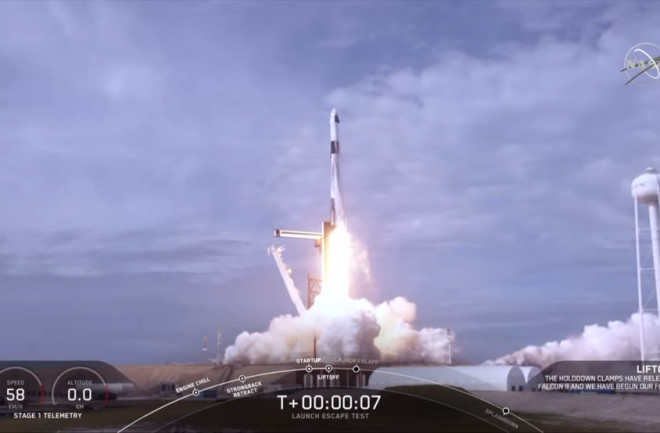SpaceX, Elon Musk's private aerospace company, has successfully completed its final test flight at NASA’s Kennedy Space Center in Florida. The test of the Falcon 9 rocket and Crew Dragon capsule brings the company one step closer to launching astronauts into space.
The in-flight abort test was a demonstration of the launch escape system on the Crew Dragon spacecraft. The system is meant to provide astronauts a quick escape from the rocket should something go wrong.

